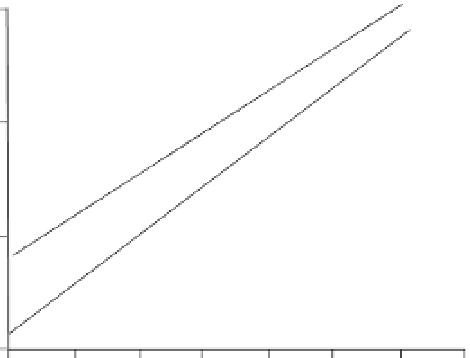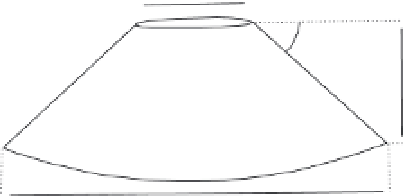Geoscience Reference
In-Depth Information
10 000
1000
100
10
10
5
10
6
10
7
10
8
10
9
10
10
10
11
10
12
Ejecta volume (m
3
Figure 8.2.
Maar crater diameter versus ejecta volume (from Sato and Taniguchi,
1997
).
W
co
θ
H
co
W
co
Figure 8.3.
Typical cone morphology showing parameters used to calculate the cone
age (after the Carn,
2000
).
theweathering rates of different climates may affect these calculations. For
example, cones in arid environments can be morphologically fresh even when
15 000--100 000 years old, whereas cones in the humid tropics start to erode
only a few decades after formation. Cones in the Lamogan Volcanic Field are as
young asafewcenturiesinage.
Time-averaged eruption rates (
Q
) can also be calculated. The interpretation of
Q
is dependent on the duration of the eruptive area in question. Calculations
over longer intervals are less susceptive to weighting by periods of intense activ-
ity and eruptive rates averaged over longer periods will be a better indication
of long-term volcano behaviour. Such calculations, however, require extensive
eruption records. The ratio of intrusive or extrusive magma is also an impor-
tant factor when calculating
Q
.Volcanoes that grow mainly by magma intrusion








Search WWH ::

Custom Search